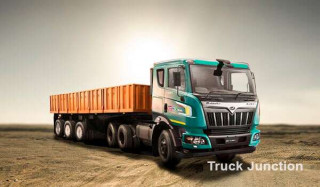The trucking industry plays a huge role in the economy of India, transporting goods and materials to locations all around the country. Several government organizations, notably the Ministry of Road Transport and Highways and the Motor Vehicles Act of 1988, regulate this sector to ensure its efficiency and safety. These regulations cover various issues, including vehicle standards, driver qualifications, safety measures, and environmental concerns. In this blog, we will help you look closer at the various regulations that govern the trucking industry in India and how they help ensure the industry’s safety and sustainability.
Various Regulations Governing The Trucking Industry
The minimum requirements that a vehicle must meet are called regulations. When these regulations are followed, it is considered safe and suitable for use on the road. Following are a few key guidelines that the vehicle must follow:
Vehicle Standard
One key area of regulation in the Indian trucking industry is vehicle standards. All trucks operating in India must meet certain criteria for size, weight, and safety features. For example, all trucks must have seat belts for drivers and passengers. Furthermore, they must have certain types of lighting and reflectors to improve visibility on the road. In addition, there are strict limits on the weight of trucks and the types of cargo they can carry and transport.
- Size And Weight Standards: are important in the trucking industry because they help to ensure that vehicles can safely navigate roads and bridges, and they help to prevent damage to infrastructure. For example, there may be limits on a truck’s overall length and width and the weight of the vehicle and its cargo.
- Construction Standards: This standard is also important in the trucking industry, as they help to ensure that vehicles are built to withstand the rigors of the road. This may include requirements for the materials used in construction and standards for the design. Furthermore, testing parts like engines, brakes, and tires are critical.
- Safety Standards: These features are another important aspect of vehicle standards in the trucking industry. These may include requirements for items such as seat belts, airbags, and lighting and reflectors to improve visibility. There may also be standards for the maintenance and repair of vehicles to ensure that they remain in good working order.
Driver Qualifications
Driver qualifications are also regulated in the Indian trucking industry. To operate a truck in India, a driver must have a valid commercial driver’s license (CDL). To obtain a CDL, a driver must pass a written driving test and meet certain age and physical requirements. In addition, the time that truck drivers must work is also subject to rules. These guidelines were set to lower the possibility of accidents and prevent fatigue.
How To Get A Drivers License For Driving A Truck
To obtain a license to drive a truck, there are certain requirements. These requirements vary depending on the location and the type of truck being driven. But to get a commercial driver’s license, several prerequisites are universal.
- Age: In most places, a person must be at least 18 years old to obtain a CDL. However, some states allow individuals as young as 16 to apply for a CDL with certain restrictions.
- Education: Most states require that applicants for a CDL have a high school diploma or equivalent. In some circumstances, extra education or training, such as a diploma from a truck driving school, may be necessary.
- Physical Requirements: To obtain a CDL, an applicant must meet certain physical requirements. This would include good vision and hearing and lifting and carrying heavy objects. Some states also have specific requirements for blood pressure, body mass index, and other physical characteristics.
- Written Test: Most states require applicants for a CDL to pass a written examination covering truck topics. For instance, traffic laws, vehicle operation, and safety procedures.
- Driving Test: In addition to the written test, applicants for a CDL must also pass a driving test. This will help in demonstrating their ability to operate a truck safely.
- Medical Exam: Most states require applicants for a CDL to undergo a medical exam to know they are physically fit to drive a truck. This may include a physical exam and tests for vision, hearing, and other medical conditions.
- Background Check: Many states require applicants for a CDL to undergo a background check. This is mainly to ensure they don’t have any criminal histories or other things that might disqualify them.
By meeting these requirements and passing the necessary tests, an individual can obtain a CDL and begin a career as a truck driver.
Safety
Safety is another key concern in the Indian trucking industry, and several regulations are in place to improve road safety. For example, all trucks must have certain safety features, such as fire extinguishers and reflective triangles. Mahindra Blazo is one such truck with Safety Features. Furthermore, there are strict rules about the maintenance and repair of trucks. In addition, there are regulations governing the loading and unloading of trucks to prevent accidents and injuries.
Environment And Sustainability
Finally, the Indian trucking industry is subject to various environmental and sustainability regulations. For example, there are regulations governing the emission levels of trucks. Furthermore, there are initiatives to encourage the use of more fuel-efficient and environmentally-friendly trucks.
- Emissions: Trucks are a major source of air pollution, and there are regulations to limit the number of emissions they produce. This may include limits on the usage of the type of fuels in vehicles and requirements for using emissions-reducing technologies such as catalytic converters.
- Fuel Efficiency: To reduce fuel consumption and greenhouse gas emissions, there are regulations to encourage the use of more fuel-efficient trucks. This may include incentives for the use of hybrid or electric trucks. Other requirements for the use of fuel-efficient technologies such as aerodynamic designs and low-rolling-resistance tires.
- Recycling And Waste Management: There are regulations to encourage the recycling and proper disposal of materials used in the trucking industry, such as tires and batteries. This helps to reduce the environmental impact of these materials and to conserve natural resources.
- Noise Pollution: Trucks can be a source of noise pollution, and there are regulations to minimize the noise they produce. This may include limits on the use of loud engines or horns or requirements for noise-reducing technologies.
Overall, there are strict regulations on the trucking business in India to guarantee its effectiveness and safety. These regulations cover various issues, including vehicle standards, driver qualifications, safety measures, and environmental concerns. By following these regulations, trucking companies and drivers can help to ensure the safety of everyone on the road and contribute to the sustainability of the industry.




